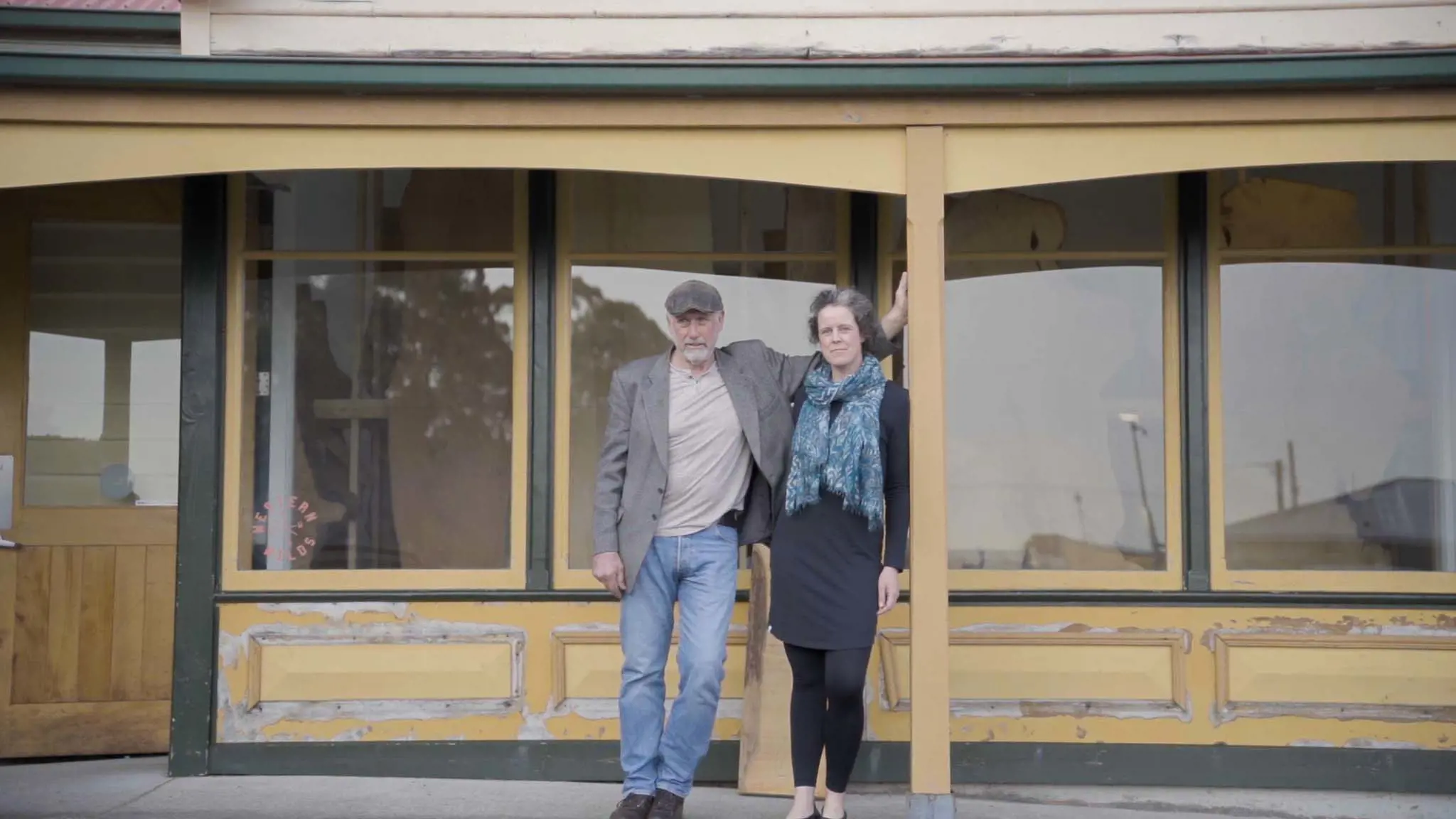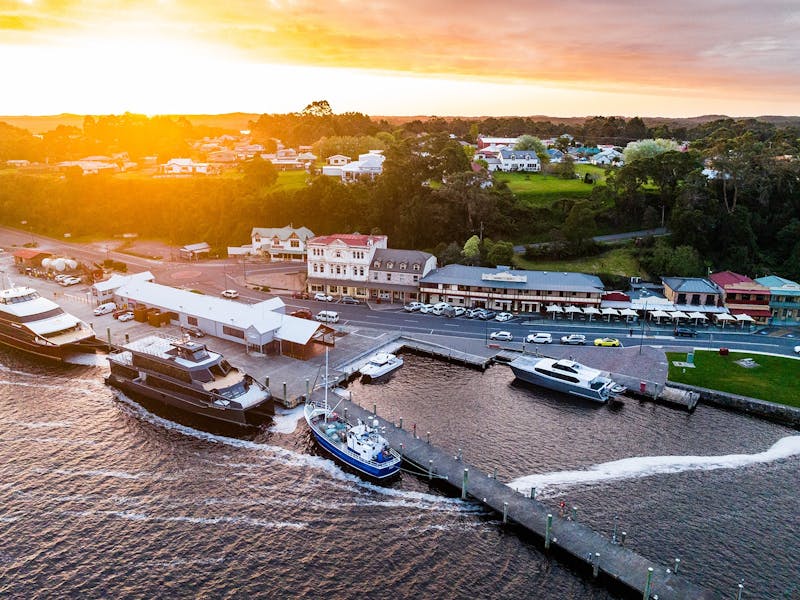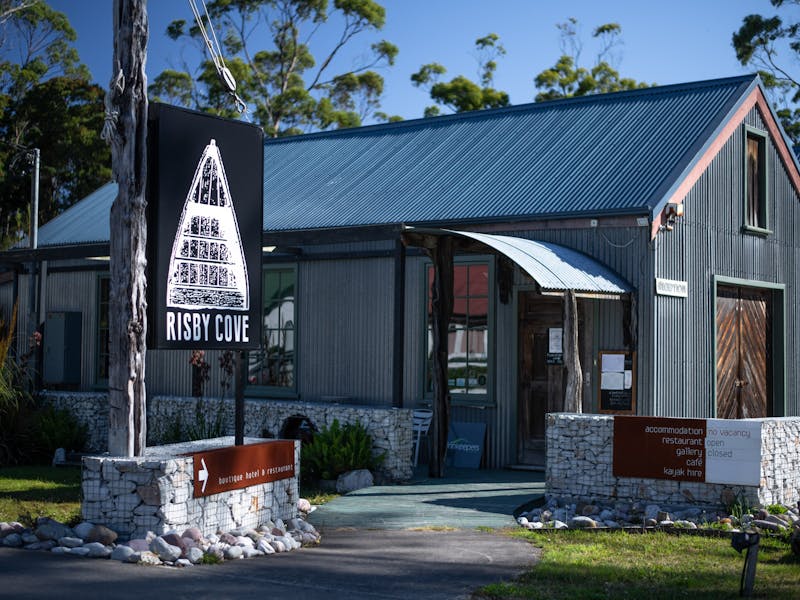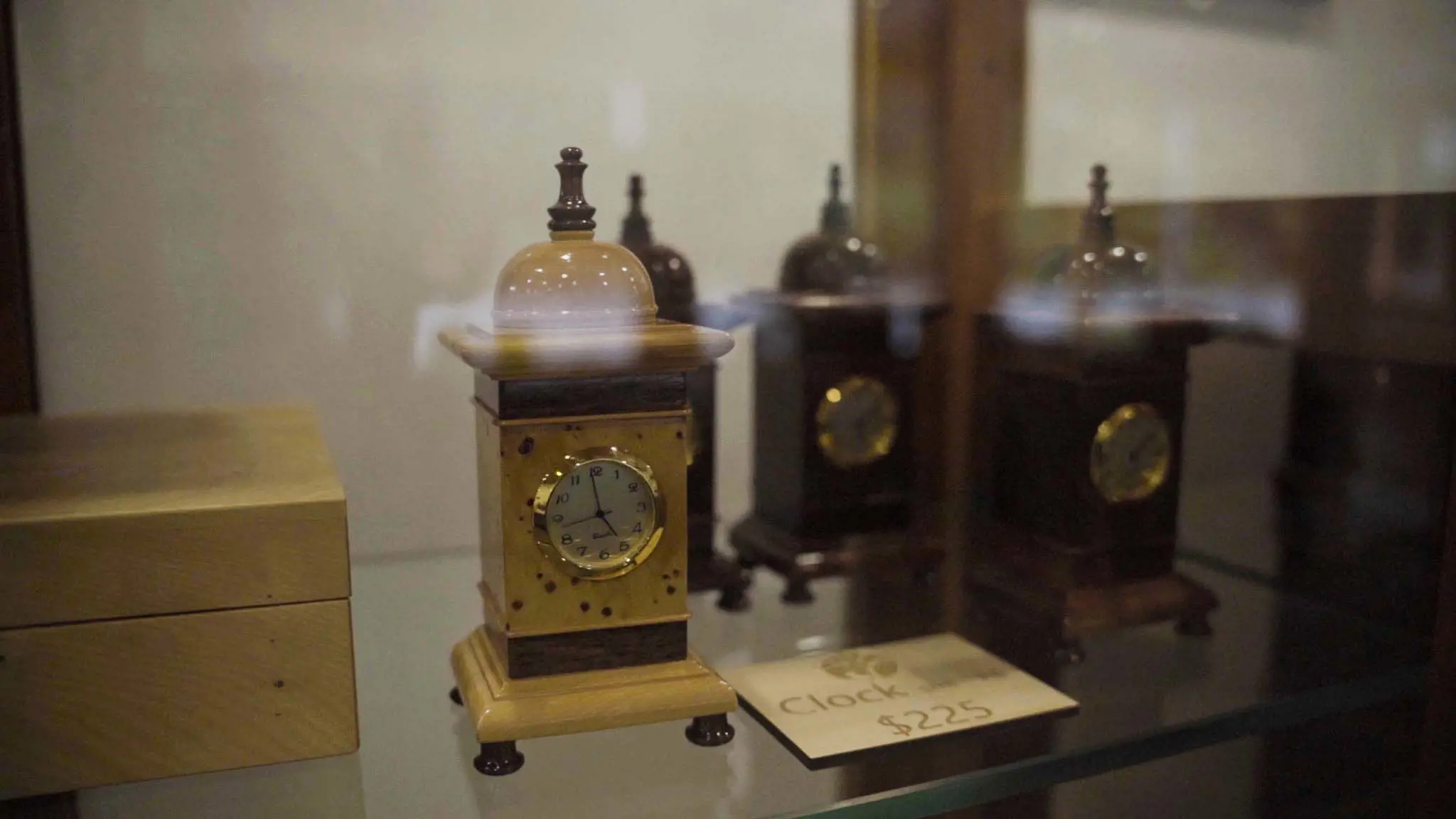
The Morrisons source their creative inspiration from a fabled tree, found only in Tasmania’s wildest pockets.
On Tasmania’s rugged west coast sits Strahan: a town wrapped in verdant forest and historical character.
Third generation sawmiller Randal Morrison grew up traversing its remote lowlands, riverbanks and mountainsides in search of the rare Huon pine.
“If you go into a Huon pine bush it’s like Lord of the Rings,” he says. “It’s a very, very medieval looking bush.”
It’s fitting, then, that this ancient tree can grow to live for more than 2000 years; trees alive today potentially predate the medieval period.
Randal and his daughter Ruth Morrison run Strahan’s Huon Pine Shop and Gallery, ethically salvaging dead and down logs from the forest floor for their wares. Whether you’re hoping to spot Huon pine in the wild or seeking out its sought-after timber, this protected species holds spellbinding properties.
“Once you’ve seen it, it will stay in your mind forever,” Randal says.
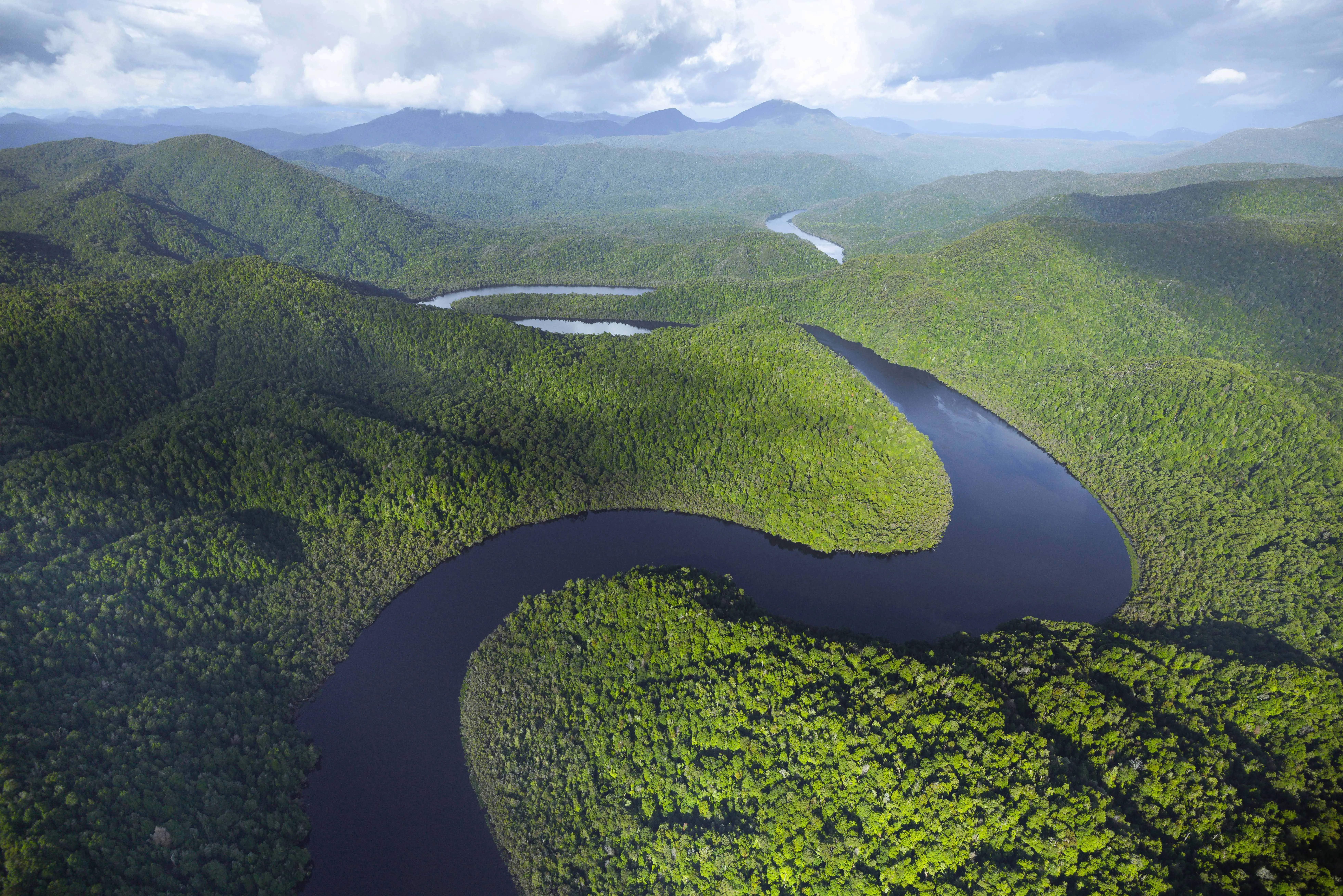
Gordon River in the Tasmanian Wilderness World Heritage Area
Family roots
There’s something about this “creamy-golden” pine that continues to captivate the Morrison family.
Their Huon pine story began in 1920 when Randal’s grandfather opened a mill in the mouth of the darkly dramatic King River. From this generation to the next, Randal’s father and his family worked along the enchanting Gordon River and its tributaries to “bring back the golden Huon pine”.
My father would come home smelling of Huon pine. When he had a bath, there [was] three inches of sawdust floating on top.
A pleasantly piquant scent lingers long after the wood leaves the forest floor. This fragrance is one of the species’ many remarkable characteristics, produced by naturally occurring methyl eugenol. This oil repels worms and other hole-boring creatures, making the timber ideal for boat building.
A conifer with vivid-green draping fronds and moss-gloved branches, Huon pine (or Lagarostrobos franklinii) is endemic to Tasmania, found only in the island’s western and southern wilderness.
Today, Randal’s family breathes new life into the timber at the Huon Pine Shop and Gallery.
“It’s sought after now by everyone from musical instrument makers to craftspeople, joiners and wood turners.”
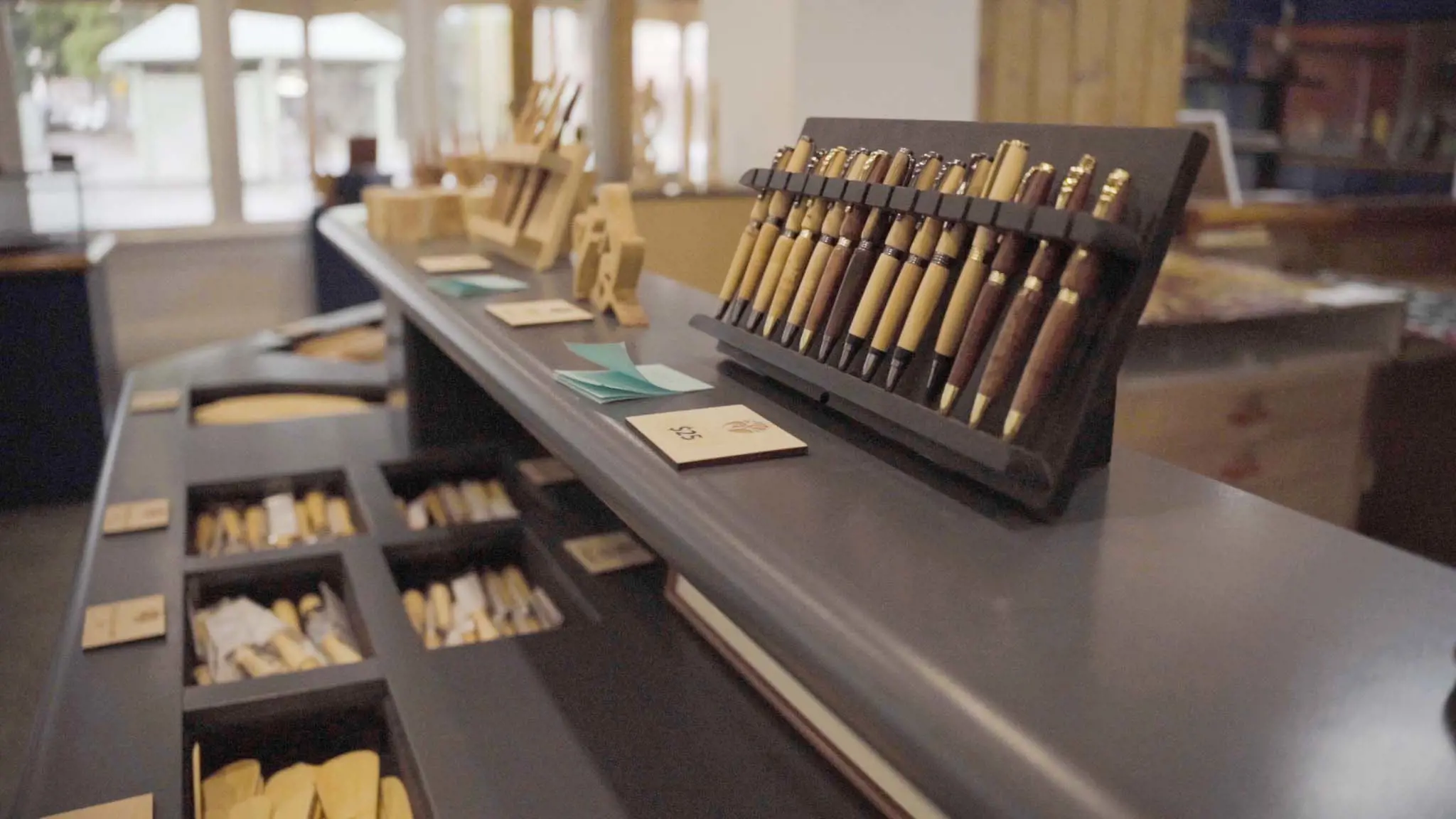
Timber trinkets at Huon Pine Shop and Gallery
Branching out
Creativity crawls out from the crevices of this small town and spills into the inviting space that is the Huon Pine Shop and Gallery.
Randal’s daughter Ruth Morrison co-owns space, stocking raw sawn timber for makers to work with and finished wooden pieces for purchase: think warm-hued cheese platters, knife handles, picture frames, clocks and bowls.
“One of our most endearing products for tourists is hand-turned Huon pine pieces of fruit,” Ruth says, “turned on the lathe, finished with a little twig on top.”
Tasmania’s thriving community of fine artisans and crafters helps fill the gallery – from blacksmiths to lampshade makers and traditional woodworkers.

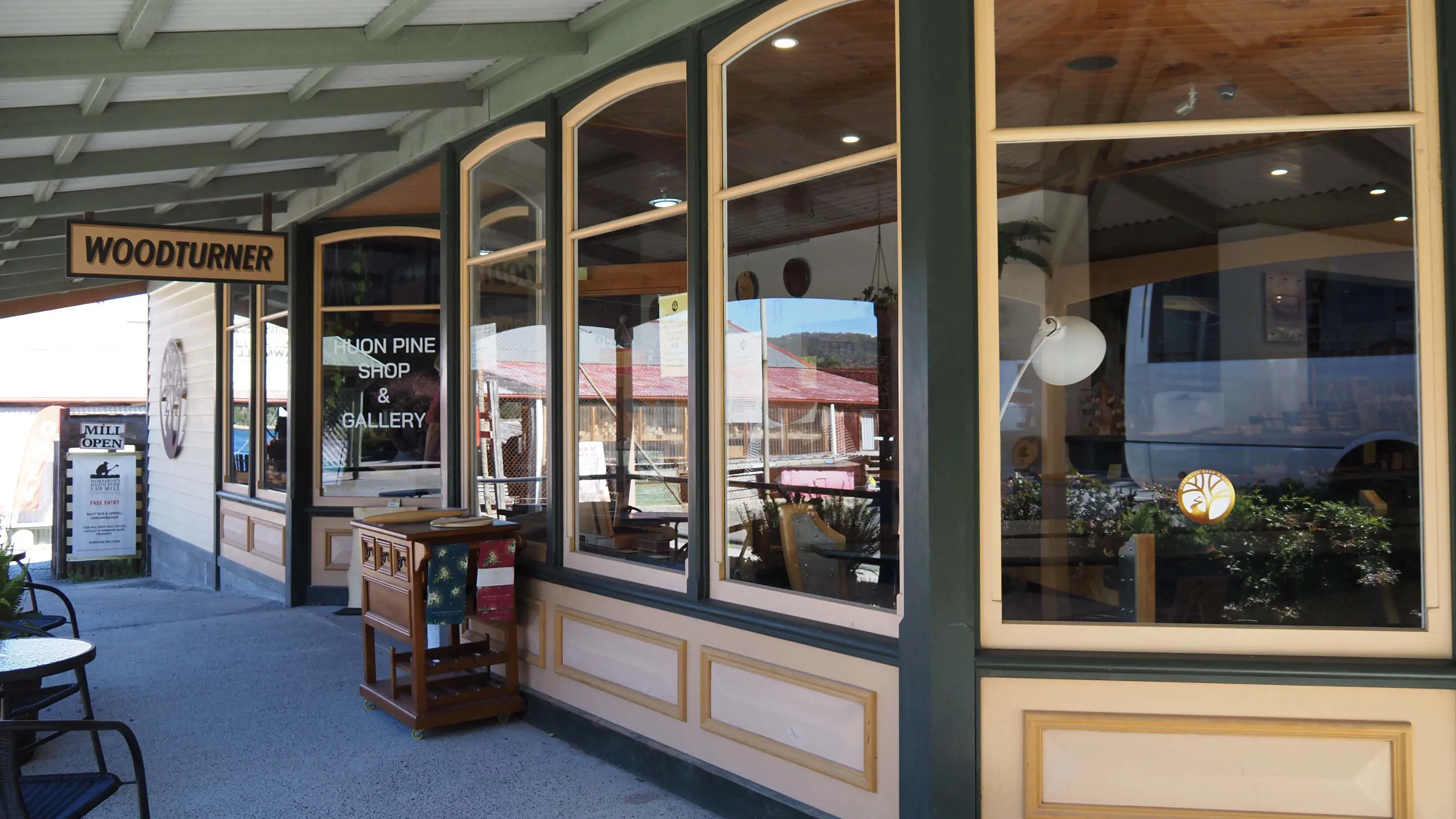
“There is a uniqueness to Tasmanian artisans,” Ruth says. “I think it’s the fact that we’re encompassed by water on all sides and people have learned their craft here from generations passed down. But what we’ve also got is a movement in Tasmania of people willing to try new things.”
Travellers and locals alike are greeted by unique aromatics when entering the space. Ruth says many guests agree it’s “the best-smelling shop in the world”.
It’s a smell that’s through my clothes, through the house I live in…it always invokes memories and emotions.
Pop into this feel-good community hub for a browse of the gallery or catch some of Randal’s immersive poetry at an evening recital. Top the experience off with a good glass of fireside Tasmanian wine.
“It’s a space that is welcoming,” Ruth says. “It’s warm, it’s vibrant, it’s open.”
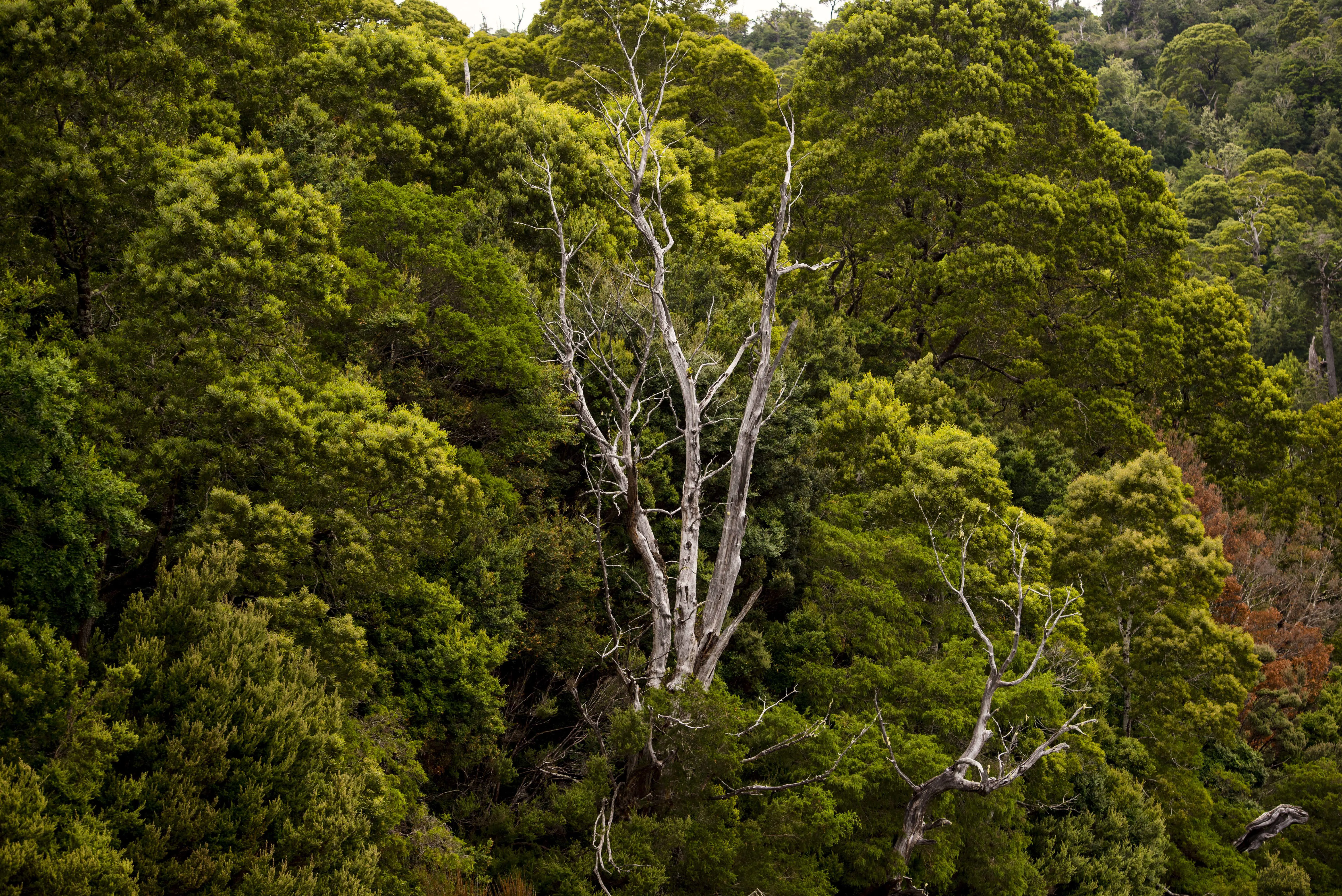
Nurturing the family tree
With time, a lot’s changed for the Morrison family; from sustainable milling practices to modern machinery getting the most out of each cherished piece.
“There are certain idiosyncrasies with cutting Huon pine that people don’t realise,” Randal says.
It’s this deep knowledge of Huon pine that inspired Ruth to continue her father’s legacy.
“When you think about someone like this retiring, you think about what the industry can lose,” she says.
Randal is “quite proud” of Ruth and shares her vision for more community activities – from future paint and sip arts evenings to beer and woodworking workshops, where travellers and locals can intermingle.
There’s fun on offer for kids too – Ruth’s littlest, Roy, has already taken a shining to this ancient timber.
“He does like playing in the sawdust,” she says with a smile.
Huon pine FAQs
How to see Huon pine
Remarkably, Huon pine is one of the Earth’s oldest living organisms. This tree can grow for more than 2000 years, and a grove believed to have existed for more than 10,000 years still grows in Tasmania’s wilderness. Huon pine takes its sweet time reaching its full height of about 30m – this process can take about 1000 years. And it’s not the only extraordinary tree species in Tasmania. Here’s a guide to Tasmania’s big (and old) trees, and where to find them.
Where does Huon pine grow?
Rare Huon pine grows throughout Tasmania’s rainy south-west and west coast. Find this ancient tree within relatively easy reach of walking trails and rivers. On the Huon Pine Walk (20min) in Corinna, stroll a boardwalk along the Pieman River to see one of these old trees. Or find a grove of them down south on Tahune Adventures’ 20min Huon River walk. See 2000-year-old Huon pines on a cruise along the Gordon River from Strahan. Or find a cluster of the plants along the Pieman River on a scenic kayak, or on a boat ride upon a Huon pine vessel.
What flora is in Tasmania?
Thanks to spending 12,000 years in geographic isolation, Tasmania is home to diverse and distinctive flora. Discover scented trees such as ancient Huon pine and the leatherwood, with its sweet white flowers helping bees produce rich honey. Find earthy bronze hues in Tasmania’s tussocky buttongrass, or flaming red tones in the deciduous leaves of the Gondwanan fagus. Hit up the alpine areas to spot cushiony flora, prickly bushes and the world’s tallest heath plant. Here’s a full guide on where and how to see Tasmania’s unique plants and trees.
